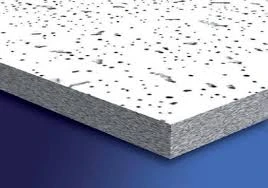Nov . 10, 2024 15:35 Back to list
T-Bar Ceiling Track System for Enhanced Interior Design and Installation Efficiency
Understanding the T-Bar Ceiling Track System A Comprehensive Guide
When it comes to modern architectural design and construction, the T-bar ceiling track system is increasingly becoming a popular choice for both commercial and residential spaces. This system, often referred to as a suspended ceiling, involves a grid framework that supports acoustic tiles or panels. This article will delve into the various aspects of T-bar ceiling tracks, exploring their benefits, installation processes, and applications.
What is a T-Bar Ceiling Track?
The T-bar ceiling track system consists of a grid of metal tracks arranged in a T-shape, hence the name. These tracks are typically made from galvanized steel or aluminum, which offers durability and resistance to rusting. The T-bars create a framework that suspends ceiling tiles or panels, allowing for easy access to the space above the ceiling for electrical, plumbing, and HVAC systems.
Advantages of T-Bar Ceiling Tracks
1. Aesthetic Flexibility T-bar ceiling tracks can accommodate various types of ceiling tiles, which come in different sizes, colors, and textures. This flexibility allows for extensive customization, enabling designers to meet specific aesthetic requirements.
2. Sound Absorption Many ceiling tiles used with T-bar systems are designed for sound absorption. This is particularly beneficial in commercial environments like offices, schools, and restaurants where noise control is crucial for comfort and productivity.
3. Easy Installation and Maintenance One of the key benefits of T-bar ceiling tracks is their straightforward installation process. The grid system can be easily suspended from the existing ceiling, and tiles can be replaced or removed without much hassle. This easy access makes maintenance and repairs more efficient.
4. Cost-Effective Compared to traditional drywall ceilings, T-bar systems can be a more cost-effective option. Their installation often requires less labor and can be completed in a shorter timeframe, resulting in lower overall project costs.
5. Hiding Utilities T-bar ceilings provide a perfect solution for concealing electrical wiring, plumbing, and HVAC ducts. This not only improves the aesthetic appeal of a space but also helps to maintain a clean and organized look.
Installation of T-Bar Ceiling Tracks
Installing a T-bar ceiling requires careful planning and precise execution
. Here’s a simplified overview of the processt bar ceiling track

1. Planning and Measurement Begin by measuring the dimensions of the room where the T-bar ceiling will be installed. Consider any light fixtures or vents that need to be incorporated into the design.
2. Framework Setup Install the main runners, which are the long beams of the T-bar grid. These are typically spaced around 4 feet apart.
3. Cross Tees Installation Once the main runners are in place, cross tees are added to create a grid layout. These cross tees connect to the main runners, forming the T-shape.
4. Hanging the Grid The framework must be suspended using wires, ensuring that it is level and securely anchored to the existing ceiling.
5. Adding Ceiling Tiles Finally, the chosen ceiling tiles can be lifted and placed into the grid, completing the installation.
Applications of T-Bar Ceiling Tracks
T-bar ceiling track systems are versatile and can be used in various applications
- Commercial Spaces Offices, retail stores, and healthcare facilities often utilize T-bar ceilings for their noise-reduction properties and aesthetic appeal. - Educational Institutions Schools frequently use this system due to its acoustic benefits, creating conducive learning environments.
- Residential Use Modern homes may incorporate T-bar ceilings in basements, living rooms, or kitchens as a way to enhance design and functionality.
Conclusion
The T-bar ceiling track system is an excellent choice for those looking to combine functionality with aesthetic appeal. Its ease of installation, maintenance benefits, and versatility make it suitable for a wide range of applications. Whether you are designing a new commercial space or renovating a residential area, considering a T-bar ceiling track system may lead to enhanced design and improved acoustics, catering to the needs of occupants while remaining budget-friendly.
-
Durable Ceiling T Grid Systems | Easy InstallationNewsAug.29,2025
-
PVC Gypsum Ceiling: Durable, Laminated Tiles for Modern SpacesNewsAug.28,2025
-
Pvc Gypsum Ceiling Is DurableNewsAug.21,2025
-
Mineral Fiber Board Is DurableNewsAug.21,2025
-
Ceiling Tile Clip Reusable DesignNewsAug.21,2025
-
Ceiling T Grid Modular DesignNewsAug.21,2025







